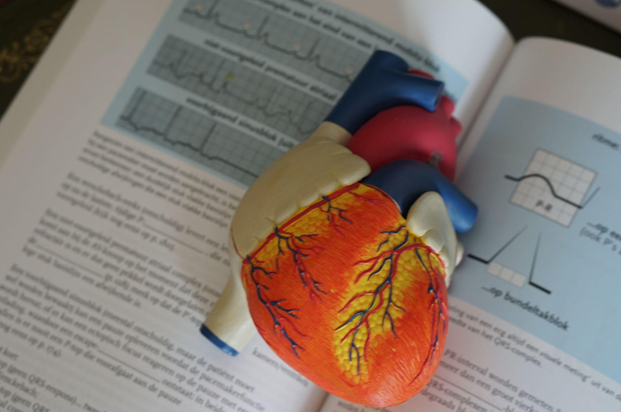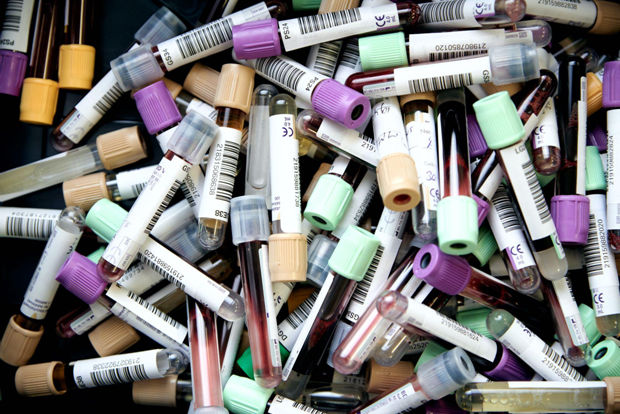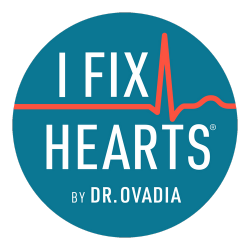How to avoid a heart attack

Heart attacks are a medical emergency that no one thinks will happen to them. But with 805,000 events recorded in the USA every year, heart attacks are by no means rare — nor easy to recover from. In fact, heart disease is responsible for between 20% and 25% of all deaths in the USA.
Through my career as a cardio thoracic surgeon, I’ve worked with thousands of patients requiring a bypass to live a normal life. Most heart attack patients recover, although their quality of life significantly reduces.
Some never recover at all.
With cardiovascular disease the number one killer of Americans nationwide, understanding your risk factors is crucial to stopping damage before it happens. As they say, an ounce of prevention is worth a pound of cure.
This comprehensive guide will walk through all the basics, including heart attack symptoms, the impact of cholesterol, ways of improving heart health, and how to measure your risk factors.
- Pre-event symptoms of a heart attack
- Heart health, cholesterol, and preventing heart disease
- Can heart health be improved over time?
- 5 ways to avoid a heart attack
- Am I likely to get heart disease?
- How to tell if your heart is healthy
- What happens after a heart attack
- Metabolic health is the key to aging well

Pre-event symptoms of a heart attack
You’re likely familiar with the most common sign of a heart attack: an uncomfortable squeezing or tightness in the chest. However, there is much more to pre-event symptoms than chest pain alone.
A few of the most telling symptoms of a heart attack include:
- Pain around unlikely parts of the body, particularly the jaw, neck, and upper belly
- A lingering feeling of heartburn that persists for hours or even days
- Dizziness and fatigue that are only abated after long rests
- Profuse sweating and shortness of breath
- Nausea, vomiting, and indigestion
Keep in mind that these are just common symptoms experienced by heart attack victims. You may not necessarily experience each one.
If you feel you’re on the verge of a heart attack, or experiencing one of the above symptoms, seek medical help immediately. It’s better to be safe than sorry.
Heart health, cholesterol, and preventing heart disease
No doubt you’ve heard that elevated cholesterol is a major cause of heart attacks. As a result of this, there are now drugs and even food products that aim to lower your cholesterol levels — an aim which allows the foods to be marketed as “heart-healthy.”
But recent studies show a more complex picture. Cholesterol is extremely misunderstood: it’s a vital component of our cell membranes (including white blood cells). While certain cholesterol levels can indicate elevated risk of heart disease, it’s important to understand the full picture.
Two different classifications of lipoproteins used to carry cholesterol in the blood are:
1. LDL Cholesterol: Low-density lipoprotein is associated with a buildup of plaque in the blood. This is because LDL particles can become oxidized and lead to heart disease.
2. HDL Cholesterol: High-density lipoprotein absorbs excess cholesterol in the blood and transports it back to the liver. You may hear this referred to as ‘good’ or ‘healthy’ cholesterol.

Cholesterol isn’t the boogeyman we have been taught. Both LDL and HDL are critical functions for inflammation control and internal repair, which is why a high cholesterol reading may signal a deeper problem happening within the body. Because cholesterol plays a role in internal repair, elevated levels can indicate that there’s a problem in the body.
Additionally, high levels of cholesterol don’t always paint a clear picture of heart health. While measuring these two classes of lipoproteins is the most common tool used to assess your risk of heart disease, it’s not enough to give a perfectly accurate reading. Specifically for LDL, we need to know if the particles are oxidized, which are small and dense enough to create buildup.
Focusing on lowering cholesterol is entirely the wrong approach. Imagine the roof to your home collapsed, spilling tiles and debris into your house and leaving it open to the elements. A team of contractors begin repairing the roof. Then, your spouse comes home and sends the contractors home — leaving the roof unfinished.
This is what happens when we fixate on reducing cholesterol levels without considering why the levels were elevated in the first place. If there’s inflammation and damage that the cholesterol was working to fix, forcing those cholesterol levels down is only going to allow that damage to increase — putting you at more risk.
This is why it’s more important to look at the triglyceride:HDL ratio, rather than numbers in isolation.
You may also have heard that most of our cholesterol comes from the food we eat. This is another cholesterol myth, and why people think reducing the amount of cholesterol they consume will reduce their cholesterol levels. Most of the cholesterol in our bloodstream is produced by our liver — only 20% comes from our diets.
To summarize: can cholesterol affect your heart health? Yes. Do you need to get rid of it to avoid a heart attack? No.
Can heart health be improved over time?

Heart health can be improved over time with the right tools and there are several ways to go about this.
- With simple lifestyle changes, you can see changes on your blood panels within 30 to 90 days, and you’ll have the added benefit of feeling better, having more energy, sleeping better, and possibly saving money on medical bills.
- Medications may be useful for people in higher risk categories, but they should be used as a tool rather than a fix-all solution. Medications provide short term relief but don’t address the underlying cause of the problem, whereas lifestyle changes stick around for the long-haul.
- You could work with a metabolic health coach to combine medications and lifestyle changes into a single long-term plan. Each plan should be customized to your unique needs, then regularly updated to match your changing goals and metabolic markers.
Medications to manage heart health
Doctors typically prescribe four types of medicines to manage poor heart health. You may also choose to use supplements to improve your heart’s function, although you should always chat with a doctor to discuss side effects or interactions.
Anti-hypertensive medications
Anti-hypertensive medications are primarily used to lower your blood pressure. The medications will relax arteries and veins to decrease blood volume, which reduces oxygen demand from your heart.
There are several different types of medications included under the anti-hypertensive umbrella:
Antiarrhythmics
Antiarrhythmics are prescribed to manage electrical impulses, such as an irregular heart beat or abnormally fast rhythms. You may be familiar with some of the most common brands, including Tambocor, Rhythmol, and Betapace.
Cholesterol lowering medications
Cholesterol lowering medications prescribed to reduce the amount of low-density lipoprotein (LDL) cholesterol in your blood and slow the buildup of arterial plaque.
Medications under this category include:
Again, it’s not clear that lowering cholesterol levels is always beneficial to your heart health. It’s best to use a multifaceted approach that approaches the situation more holistically.
Aspirin
If you have already experienced a cardiac event, your doctor may prescribe aspirin to thin your blood and prevent dangerous clotting. But this is increasingly rare: most doctors do not encourage the daily consumption of Aspirin.
Supplements
You may be interested in using supplements to support your heart health. There are three common suggestions:
To summarize: medications and supplements can manage the symptoms of poor heart health, but they won’t address the reason your heart is unhealthy in the first place.
5 ways to avoid a heart attack
If you’re worried about having a heart attack, the good news is that there are steps you can take to lower your risk and even avoid certain risk factors entirely — and restore your heart health along the way.
Here are the most important five factors.
1. Eat whole, real foods
Eating processed foods is an extreme risk factor for heart attacks.
Recent studies have shown that ultra processed foods (UPF) have been associated with cardiovascular disease, early death, and all-cause mortality including cardiac events.
You can’t strike a ‘balance’ between healthy food and unhealthy food, and you can’t exercise the garbage away with an extra trip to the gym. While it’s possible to eat burgers and candies and stay slim, the damage is still occurring internally where you can’t see it.

If you want to avoid a heart attack, you’ll need to rethink your diet completely. Of course, one pack of Oreos isn’t going to send you to the emergency room, but if UPF are a regular part of your diet, you need to know that eating a salad doesn’t undo the damage.
Whole, real foods include anything that come from the ground or are fed from the ground. As a general rule of thumb, these include:
Converting your diet completely probably won’t happen overnight. Start by finding ways to substitute certain foods or ingredients, and slowly make your way towards whole, real alternatives.
2. Implement intentional movement
The human body loves to move, and so does your heart. Incorporating exercise into your daily regime is a great way to support metabolic health over time.
Resistance training, such as lifting weights or following a bodyweight strength routine, is a great way to get started. Not only will this increase your blood flow and lung capacity, but it can strengthen the muscles and burn excess sugar in the blood.
There’s no wrong or right way to approach a daily exercise regimen. Even a few minutes of walking up the stairs can add up over time. Just be sure to set a system and stick to it — even if you don’t feel like it. It doesn’t take long to become a routine habit.
3. Get more sleep
Poor sleep has been linked to heart attacks in hundreds of unbiased studies. Data shows that less than six hours of sleep per night can raise your risk for a heart attack by 20%.
If you struggle with quantity or quality of sleep, practice good sleep hygiene such as:
If you’re struggling with underlying factors like insomnia, you may want to speak to a healthcare partner about other treatments.
4. Find good stress relief
Hobbies, friendships, and weekend vacations are all examples of stress relieving activities. Without incorporating some into your life, you may be putting more stress on the heart than you realize, and boosting your risk of a heart attack in the future.
Stress buildup affects even the most resilient individual. The more stress you experience, the more pressure is put on the heart and the higher your blood pressure climbs. Over time, this could have disastrous consequences on your health and wellness — and potentially induce a heart attack.
Whatever stress relief looks like to you, pursue it in earnest. Your heart will thank you.
5. Partner with a metabolic heart coach
The process of avoiding a heart attack should be as intentional as it is preventative. This means partnering with experts who can guide you towards a long-term plan of care.
Along with your primary care provider, you may want to work alongside a metabolic health expert that offers deeper insights about your heart and its risk factors.
If you’re interested in finding a metabolic health coach that truly aligns with your goals, my comprehensive vetting guide will help.
Am I likely to get heart disease?

There is no easy answer to this question and no absolute guarantees, although there are generally three factors to consider:
Although genetics do have a role to play in heart attacks, cardiovascular disease is often preventable. That’s why it’s essential to check for signs of illness and nip problems in the bud, especially if you already have one or more risk factors.
Stress tests have their place, but contrary to popular belief they won’t show your overall risks of experiencing a heart attack — just whether you’re currently at risk. This makes them good if you feel you’re experiencing symptoms, but not if you want an overall risk assessment.
Coronary artery calcium scans are the best possible screening tool. You can schedule a session with your cardiologist or talk to your doctor about setting up an appointment.
If you’d like to assess each of these quickly, take my free metabolic health quiz.
What happens after a heart attack
Although heart attacks are so common they feel almost routine these days, the fact is life is rarely the same after experiencing one.
If you do recover normal function, you will spend the rest of your life worrying about a secondary event. Your activity level will probably be reduced by weakness and fatigue, and you may need to give up some activities that you enjoy.
Heart attacks leave damage that can’t always be healed. The symptoms of your attack can be reduced or prevented, but scarring of the muscle tissue can’t be removed.
Roughly one in five people over the age of 45 will have a secondary cardiac event within the next five years.
If you find yourself in this category and your heart continues to worsen, you may need to consider dramatic treatments like open heart surgery.

Surgery is a life-saving option, but once again, it’s not a perfect cure. Not everyone survives the surgery, some people make it through the surgical process but struggle with heart problems down the road. Others do not fully recover from their post-op experience and have very short lifespans as a result. Not making a full recovery can limit your ability to drive or fly, and even lift moderate weight — including grandchildren. And of those that do make a full recovery, there’s still a lifetime of medication.
Despite the excellent medical treatments available these days, your first priority should be to avoid heart attacks in the first place — not content yourself with the promises of modern medicine.
Frankly, you only have one heart to lose.
How to tell if your heart is healthy

The signs of a healthy heart aren’t always visible, but certain factors can be measured to assess your current wellness. Although some measurements can be taken at home, it’s never a bad idea to pay for a thorough test.
You have a few options available:
Blood pressure
You can check for high blood pressure at almost any pharmacy or grocery store in the country. Most blood pressure scores should sit around 120/80 mmHg, indicating a healthy heart. Anything higher may point to varying degrees of hypertension, which include:
Keep in mind that artery calcium scans can’t detect blockages like soft plaque atherosclerosis, which means they won’t always detect your true risks for a heart attack.
Echocardiogram
Echocardiograms are one of the least invasive heart tests widely available for use. Doctors will image your heart using a special gel (similar to a sonogram test for pregnant women) and assess the overall function of your valves, heart rate, and blood flow. Keep in mind that it’s possible to request an echocardiogram even without insurance, which means you don't have to wait on a claim to check if your heart is healthy.
Heart CT scan
CTs rely on x-rays to image cross-sectional views of your heart. For most people, heart CTs are best used to check congenital defects or assess damage after a cardiac event, although they can also detect blockages within the coronary arteries.
Transesophageal echocardiography
As their name implies, TEE tests are essentially ultrasound images of your heart. Doctors insert a probe down your esophagus to get as close as possible to the heart muscle, so although you won’t be very comfortable, you will be able to check for blood clots and improper valve function with great accuracy.
Coronary testing is a good way to assess your current heart health, but it will do nothing to defend your heart from future damage. Plus, most people don’t think about getting heart tests until after the signs of disease emerge, which means it’s usually a last-minute intervention rather than a prevention process.
If you’re serious about spotting plaque buildup and avoiding a heart attack, you can’t afford to be reactive — you need to be proactive by defending your metabolic health.
Metabolic health is the key to aging well
Avoiding a heart attack is just one small aspect of your cardiovascular health. Curtailing your risk factors benefits much more than just your circulatory system: it keeps you off my operating table.
If you want to age well, protect your heart, and maintain a high quality of life, focusing on metabolic health should be mission-critical.
Metabolic health is how well your body processes what you eat.
It’s not just about weight; you can be thin and also metabolically unhealthy. A person who is metabolically unhealthy is at risk of metabolic diseases including diabetes, stroke, cancer, and heart disease. Metabolic health is a holistic way of looking at health that encompasses the heart, body fat, exercise levels, diet, and blood sugar.
There are five key factors of metabolic health:
Blood pressure
For the average adult, a healthy blood pressure sits below 120/80 mmHg.
Keep in mind that this measurement should be taken without the help of diuretics. If you are on blood pressure medications, you are already in a poor metabolic state.
Blood sugar
A blood panel can estimate the amount of glucose in your blood. Most adults should not have readings greater than 140 mg/dL (or 7.8 mmol/L).
If you are a type 2 diabetic on insulin, you can assume that your blood sugar is inherently out of balance — another risk factor for heart disease.
Waist circumference
Waist circumference measures the amount of visceral belly fat above your belly button. This isn’t BMI or a body fat percentage, it’s simply a measurement from one side of your body to the other.
Using a tape measure, take these readings in the morning to avoid measuring any bloating. As a rule of thumb, waists should be below 40 inches for men and 35 inches for women.
Triglycerides
The triglycerides in your blood are created from unused calories, which eventually get stored in fat cells around the body.
You’ll want to aim for a reading that is less than 150 mg/dL (or 1.7 millimoles per liter).
Triglycerides are tricky to measure at home without the right equipment. If possible, schedule an advanced metabolic panel with your healthcare provider.
Cholesterol levels
As we previously discussed, there are two different types of cholesterol readings. For the purposes of heart health, you’ll focus specifically on HDL. You want your HDL to sit above 40 if you’re a man, and above 50 if you’re a woman.
Protecting your heart the healthy way
Just 12% of Americans are considered to be metabolically healthy. Odds are you’re one of the 88% with at least one abnormal metabolic health marker, which can wreak havoc on your heart health and increase your risks for a heart attack.
If you want to repair your metabolic health, you’ll need to take a multistep approach. Treatments should focus on your diet, exercise level, and factors for sleep and stress, and you’ll need to track your progress with regular blood tests and panels.
You won’t need to manage it all alone. Metabolic health coaches are available to guide you through the process, providing customized plans, lab interpretations, and tailored programming for your unique circumstances.
To take control of your metabolic health in a supportive community and guided by experts, join my waitlist to be notified when my exclusive coaching program opens again. You’ll get personal support throughout your journey, so spaces are extremely limited. In the meantime, you can learn the steps to improve your metabolic health and reduce your risk of heart disease using the free material in my blog.
